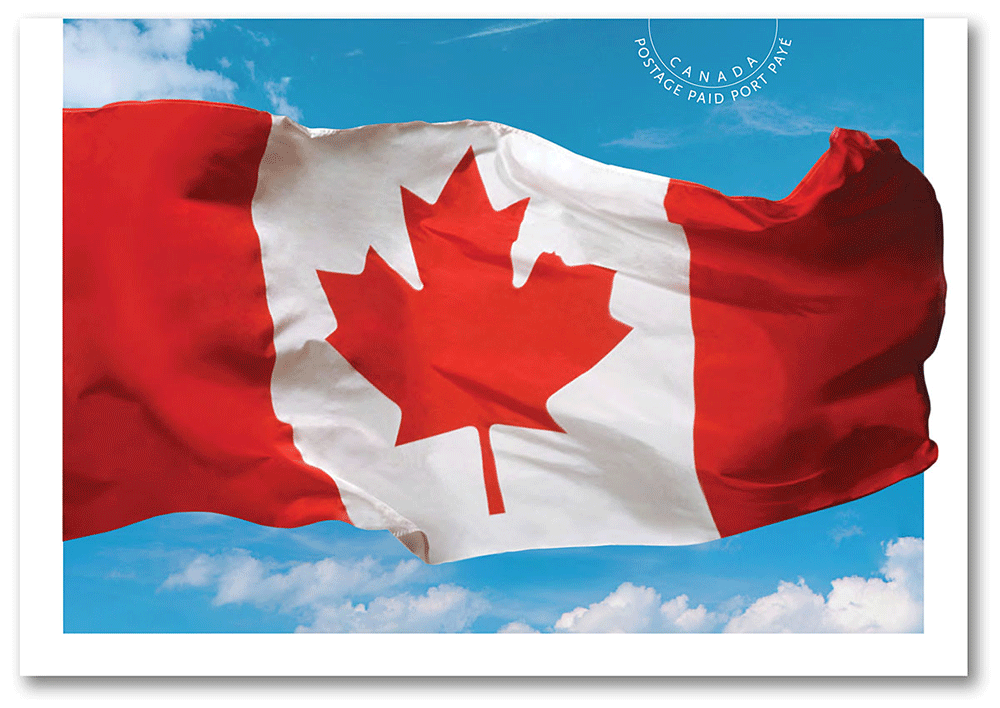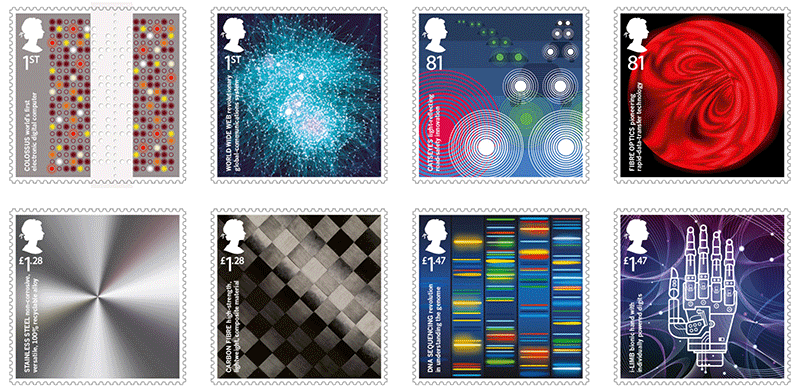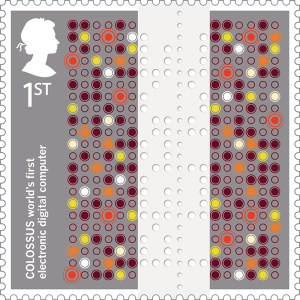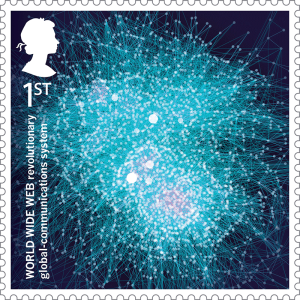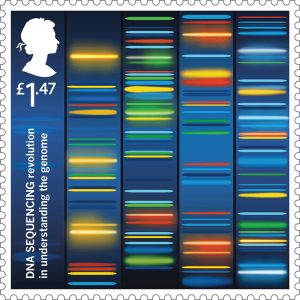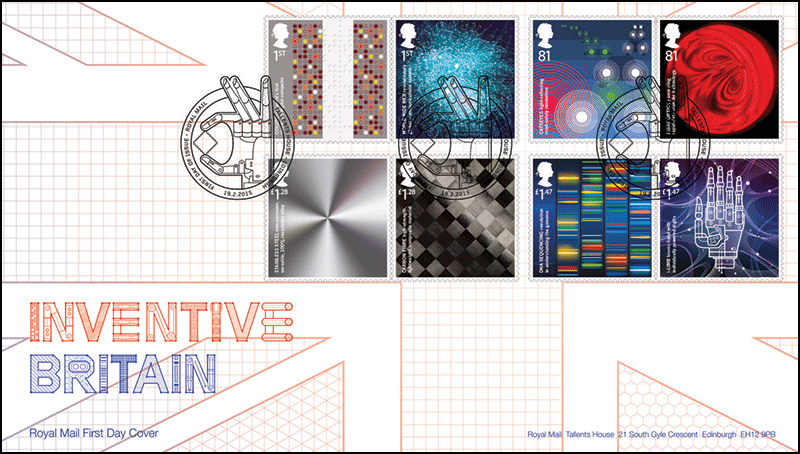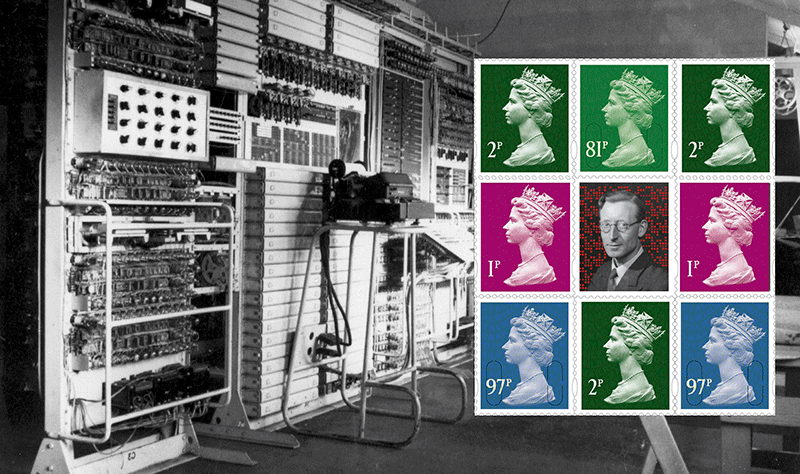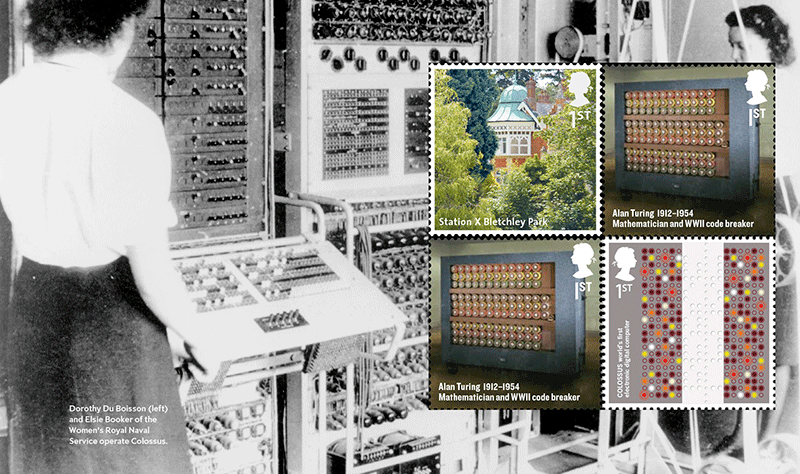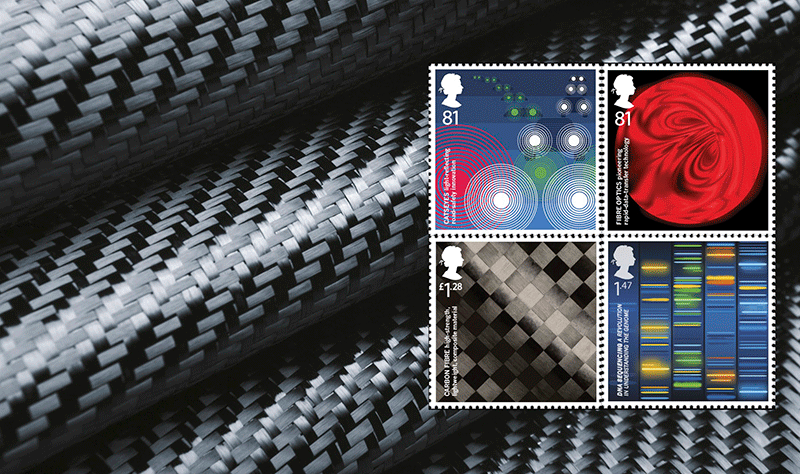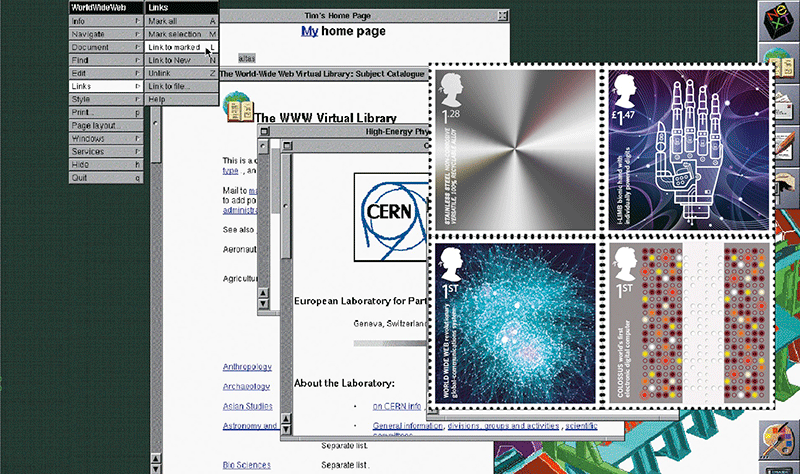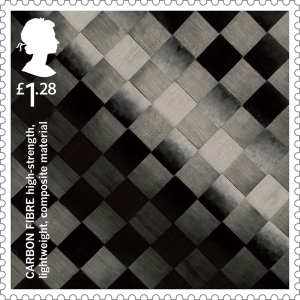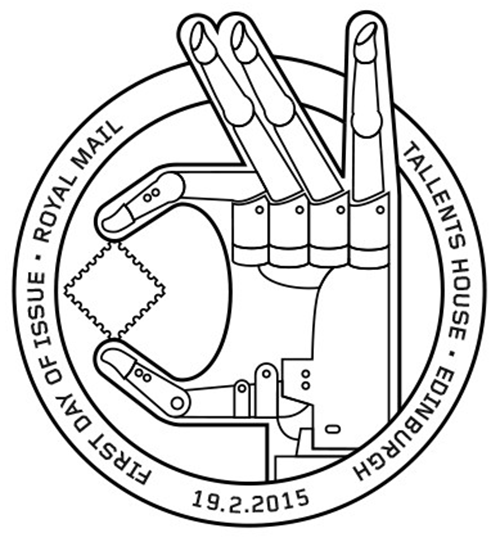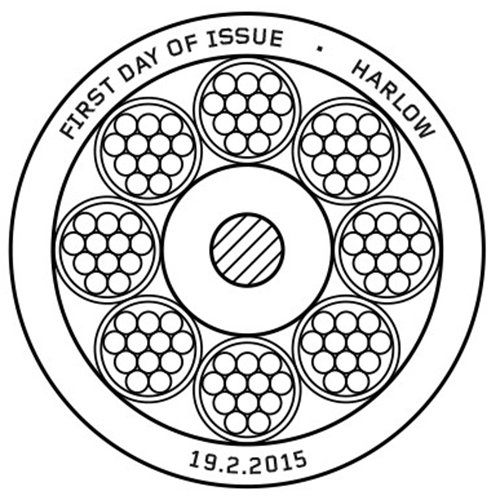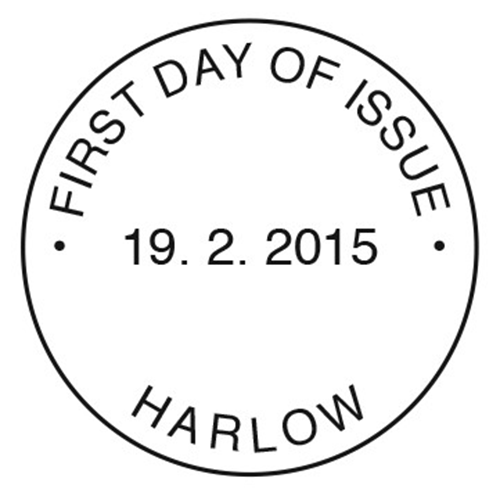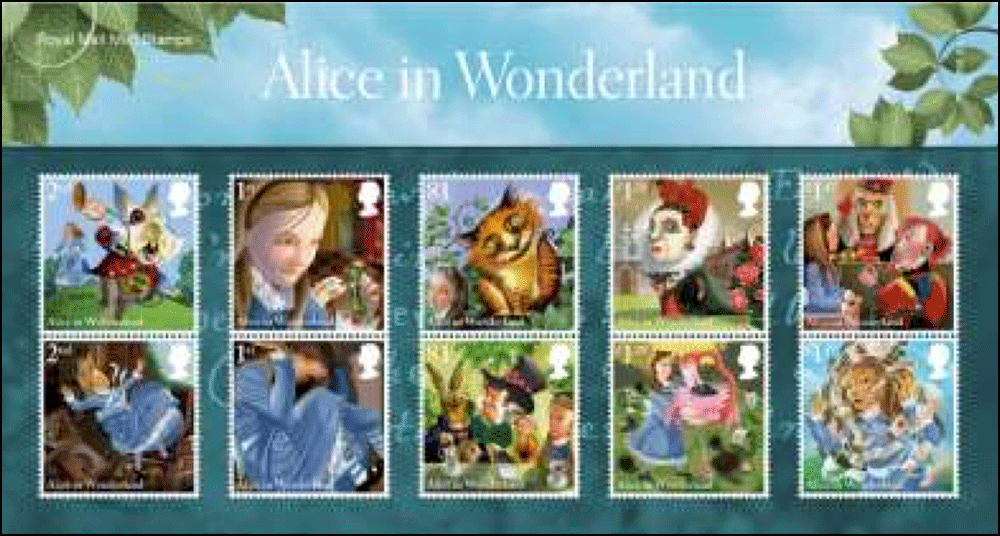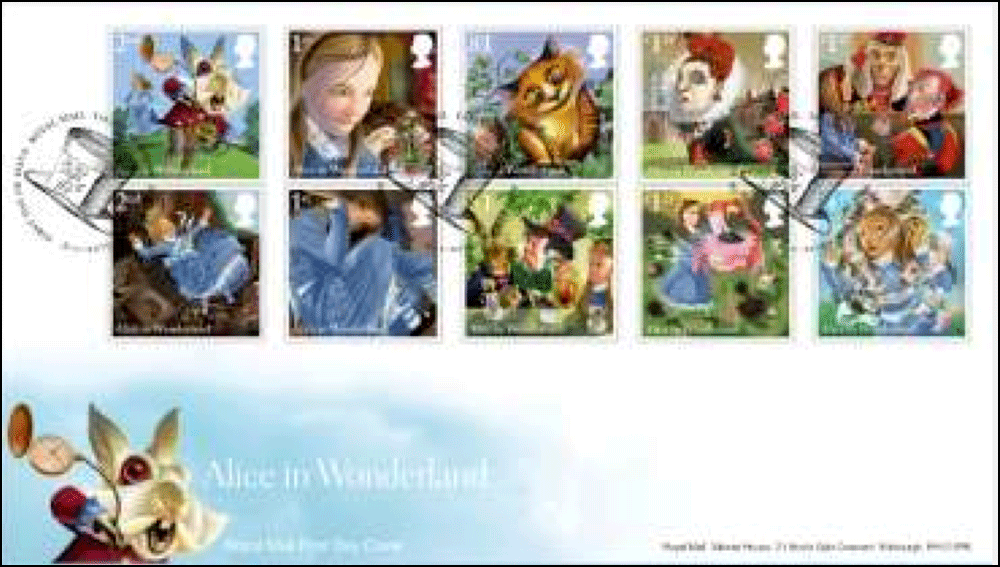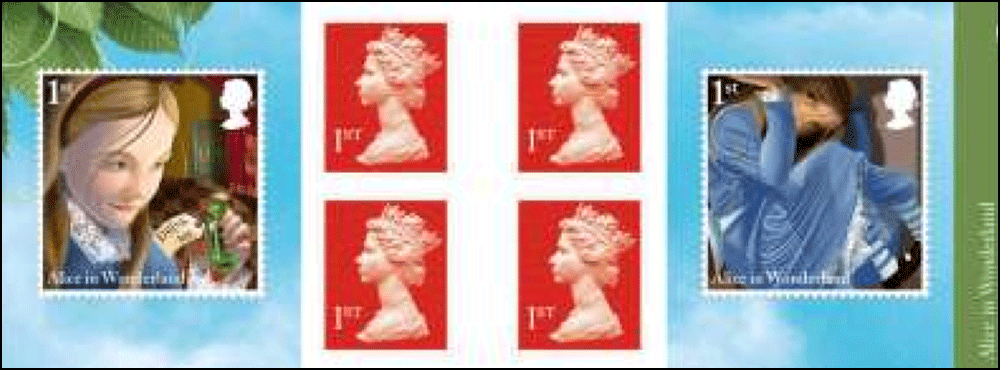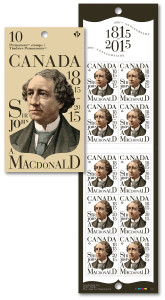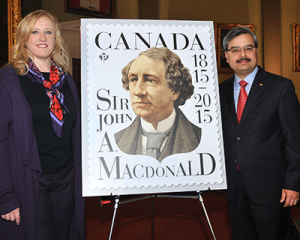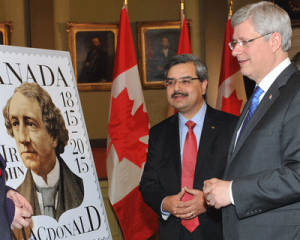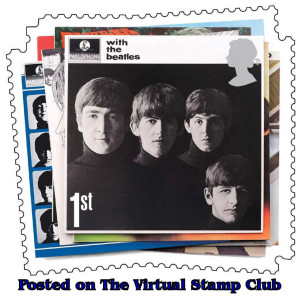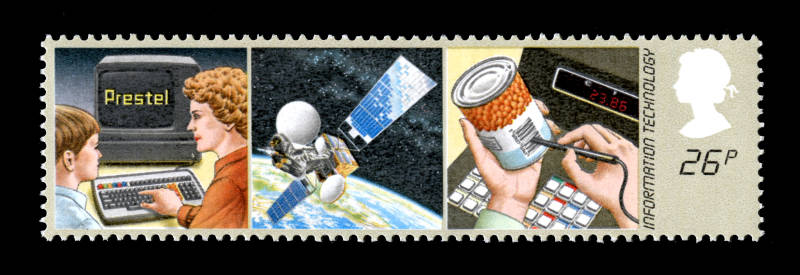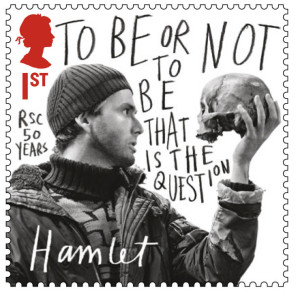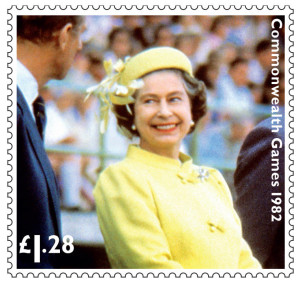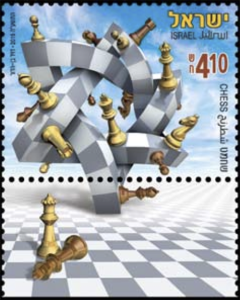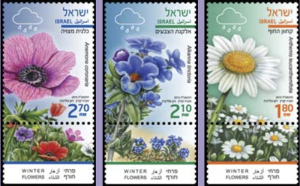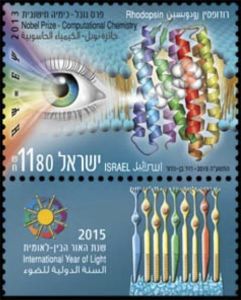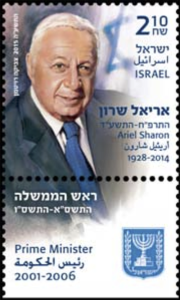[press release]
Post & Go Working Sail
Issue date: 18th February 2015 Reason and inspiration
Reason and inspiration
Over the centuries, the beauty of sailing ships inspired innumerable grand paintings, including enormous seascapes and complex battle scenes – but it is the work of folk artists who painted on a more humble scale, observing ships as they came into the port, that has captured for posterity many types of traditional merchant and fishing vessels in the late 19th and early 20th centuries.
These artists, often collectively known as the ‘pierhead’ painters, would seek commissions among the owners and crew of a ship in port. They would sketch from life and produce portraits of the vessel before the ship sailed again, usually within days. The typical portrait was a broadside view of the vessel at sea or leaving harbour, with details added in the background to help identify the location.
Pierhead painting forms a distinct genre of popular, or folk, art. The earliest examples appear in the 18th century though most date from the late 19th and early 20th century. They are mostly simple portraits of merchant ships and fishing vessels. They have little in common with the elaborate seascape of the traditional and academic schools of marine art. Pierhead artists are often described as naïve but this does not account for the skill of some of these artists. Neither does it allow for the accurate and often quite meticulous attention to detail. Those pictures that survive preserve, with accurate details, the only pictorial evidence of certain historic types of vessel.
The vessel always took precedence in the painting and the background, often out of scale, served to mainly identify the port. The style of Pierhead originated in Europe, where schools of artists grew up in the main ports catering for visiting merchant vessels. The development of this genre linked to the expansion in merchant trade that took place in the early 19th century. These paintings needed to be produced and sold quickly before potential customers left port, so the designs became standardised for quick and easy production Little is known about many of the ‘Pierhead painters’ beyond the names they signed. They were usually self- taught and consequently their work is free of formal painting technique. Ship portraiture was often a sideline activity to supplement an income. However for a few artists, it became their means of livelihood.
Stamps and Technical Details
Stamps: 6 x 1st Class
Products: FDC, Presentation Pack, Stampcards, Retail Book, Generic Sheet
Design: Osborne Ross
Acknowledgements: Falcon by JW Green © Lancashire County Council Museum Service; Briar by Alexander Harwood used with kind permission of Lossiemouth Fisheries and Community Museum, photograph © Royal Mail Group Ltd 2015; Humber Sloop ‘Harry’ by Reuben Chappell © National Maritime Museum, Greenwich, London; Margaret by Henry Lawson © Scottish Fisheries Museum Trust Ltd; Stag attributed to George Race © North East Lincolnshire Council, photograph © Royal Mail Group Ltd 2015;Nell Morgan by G Ramsey © Norfolk Museum Service.
Printer: International Security Printers
Stamp Size 56(w) x 25(h)
Print process: Gravure, Self-Adhesive
The Stamp Set is available from Tallents House and will be overprinted with First Class values and a philatelic code in gravure, printed and inserted in a carrier card designed by Osborne Ross.
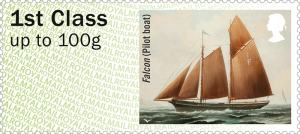 Falcon by JW Green, 1897
Falcon by JW Green, 1897
John William Green (1863–1951) was a keen amateur artist, working in pen and ink, watercolours and oils. He had a particular interest in painting and drawing vessels seen in Fleetwood.
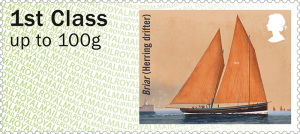 Briar by Alexander Harwood, 1907
Briar by Alexander Harwood, 1907
Alexander Harwood (1873–1943) moved to Aberdeen in his twenties and worked as a fish porter for most of his life. He was a prolific amateur artist and painted hundreds of portraits of Aberdeen trawlers, working in watercolours, oils and gouache.
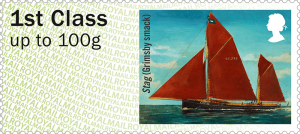 Stag attributed to George Race, date unknown
Stag attributed to George Race, date unknown
George Race (1872–1957) lived in Cleethorpes and specialised in painting portraits of trawlers arriving at the dock and would then sell his work to the seamen before their vessel left the port.
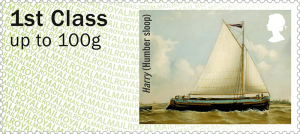 Harry by Reuben Chappell, date unknown
Harry by Reuben Chappell, date unknown
Reuben Chappell (1870–1940) was born in Goole and from an early age showed a talent for drawing ships. He made his living by painting ships and selling his oils and watercolours to seamen, first in Goole and then in Cornwall, where he became well known locally.
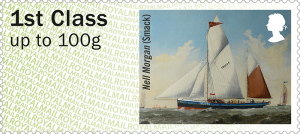 Nell Morgan by G Ramsey, 1886
Nell Morgan by G Ramsey, 1886
Not much is known about G Ramsey, except that he lived in Norfolk and presumed to have been among the local ‘pierhead’ painters. He actively painted sailing vessels between 1856 and 1889.
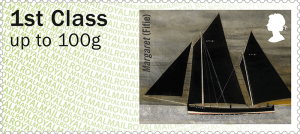 Margaret by Henry Lawson, 1890
Margaret by Henry Lawson, 1890
Henry Lawson (1872–1966) was a fisherman in Pittenweem who, as a teenager, earned extra money by painting boats. The Margaret was his father’s first boat and was used for line-fishing as well as drift-netting.
Products
Stamp Set and Carrier Card
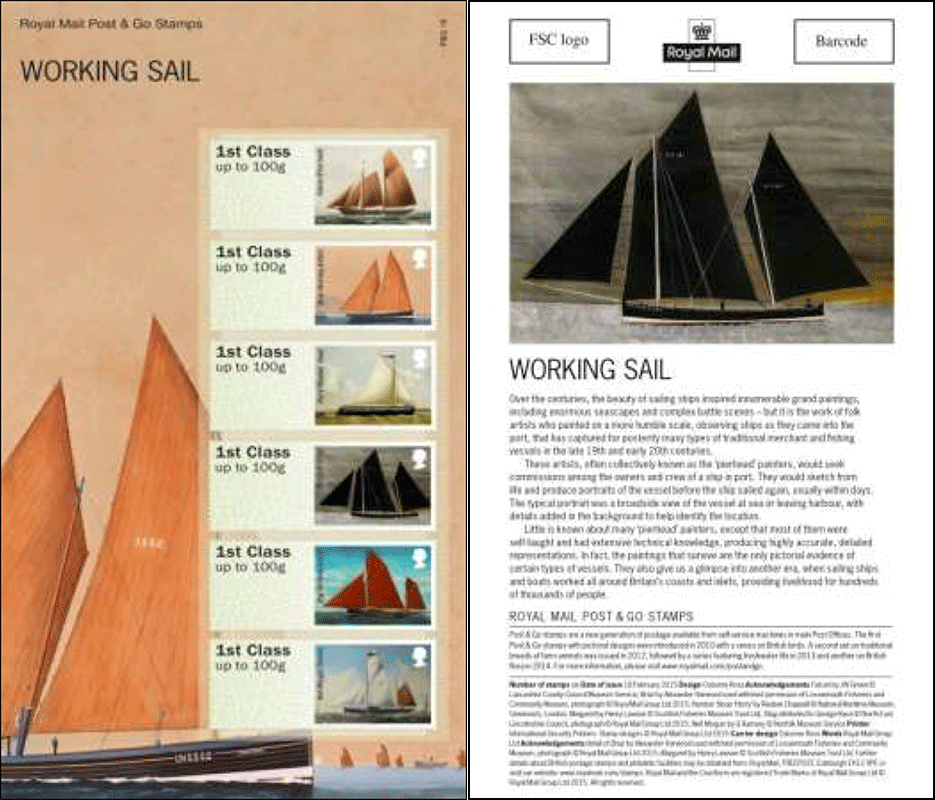 The Working Sail carrier card features information about ‘pierhead’ painters, including how they worked and their historical importance. It also includes a short biography of each of the artists whose work appears on the stamps. Two of the stamp images are shown at larger size, and background information about Post & Go stamps is also included.
The Working Sail carrier card features information about ‘pierhead’ painters, including how they worked and their historical importance. It also includes a short biography of each of the artists whose work appears on the stamps. Two of the stamp images are shown at larger size, and background information about Post & Go stamps is also included.
Price: £3.72
First Day Cover
 The envelope designed by The Chase is a generic design for all Post & Go stamps, featuring a map of the UK. Each set of Post and Go stamps will have its own insert designed by Osborne Ross featuring information about ‘pierhead’ painters, including how they worked and their historical importance. It also includes a short biography of each of the artists whose work appears on the stamps. Two of the stamp images are shown at larger size, and background information about Post & Go stamps is also included.
The envelope designed by The Chase is a generic design for all Post & Go stamps, featuring a map of the UK. Each set of Post and Go stamps will have its own insert designed by Osborne Ross featuring information about ‘pierhead’ painters, including how they worked and their historical importance. It also includes a short biography of each of the artists whose work appears on the stamps. Two of the stamp images are shown at larger size, and background information about Post & Go stamps is also included.
Price: £4.94 (Overseas £4.12)
FDC Code: ZF017
First Day Envelope: ZE016
Postmarks
 The Tallents House postmark features a line drawing of map of the UK. The alternative postmark references Great Yarmouth was chosen because of its maritime associations and because it is home to a museum that has a large collection of works by ‘pierhead’ painters, including George Race, G Ramsey and Rueben Chappell.
The Tallents House postmark features a line drawing of map of the UK. The alternative postmark references Great Yarmouth was chosen because of its maritime associations and because it is home to a museum that has a large collection of works by ‘pierhead’ painters, including George Race, G Ramsey and Rueben Chappell.
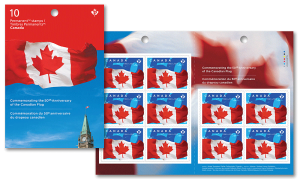 Pushing the boundaries of stamp production, Canada Post has created Canada’s first fabric stamp as a fitting celebration of the 50th anniversary of the Canadian flag, a symbol cherished at home and widely recognized and respected abroad.
Pushing the boundaries of stamp production, Canada Post has created Canada’s first fabric stamp as a fitting celebration of the 50th anniversary of the Canadian flag, a symbol cherished at home and widely recognized and respected abroad.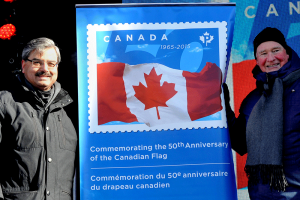 “The flag has become part of the fabric of our lives,” says Deepak Chopra, President and CEO of Canada Post (shown to the left of the Right Honourable David Johnston (right), Governor General of Canada. “As these stamps travel far and wide, they will be a fitting tribute.”
“The flag has become part of the fabric of our lives,” says Deepak Chopra, President and CEO of Canada Post (shown to the left of the Right Honourable David Johnston (right), Governor General of Canada. “As these stamps travel far and wide, they will be a fitting tribute.”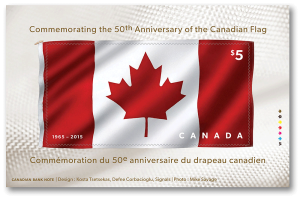 The souvenir sheet for this issue is shown on the right.
The souvenir sheet for this issue is shown on the right.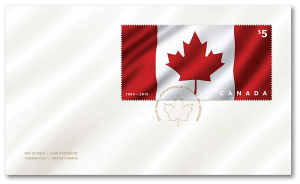 Canada Post is issuing two stamps to celebrate the anniversary of the flag. Canada’s first fabric stamp, printed on a satin rayon fabric, is a self-adhesive $5 stamp that measures 100 mm by 50 mm and is available as a souvenir sheet or affixed to an Official First Day Cover (OFDC) cancelled in Ottawa (shown on the right). One thousand limited edition uncut press sheets, signed by the original seamstress, Joan O’Malley, are also available to mark the occasion. In addition, a Permanent self-adhesive commemorative stamp that measures 40 mm by 32 mm is also available in booklets of 10 or affixed to an OFDC, also cancelled in Ottawa, ON (shown below)
Canada Post is issuing two stamps to celebrate the anniversary of the flag. Canada’s first fabric stamp, printed on a satin rayon fabric, is a self-adhesive $5 stamp that measures 100 mm by 50 mm and is available as a souvenir sheet or affixed to an Official First Day Cover (OFDC) cancelled in Ottawa (shown on the right). One thousand limited edition uncut press sheets, signed by the original seamstress, Joan O’Malley, are also available to mark the occasion. In addition, a Permanent self-adhesive commemorative stamp that measures 40 mm by 32 mm is also available in booklets of 10 or affixed to an OFDC, also cancelled in Ottawa, ON (shown below) 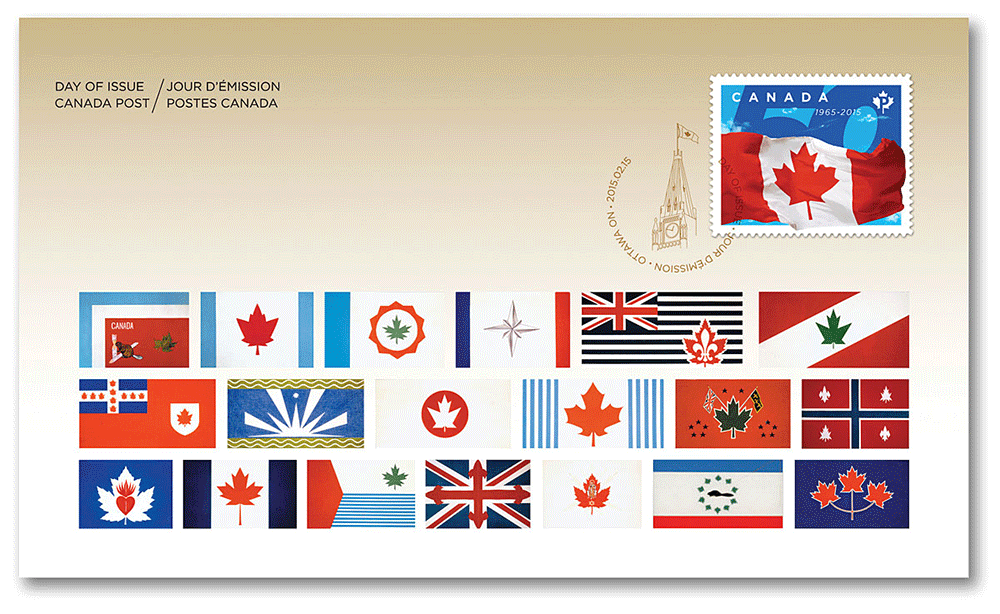 A postage-paid picture postcard is also available (below).
A postage-paid picture postcard is also available (below). 